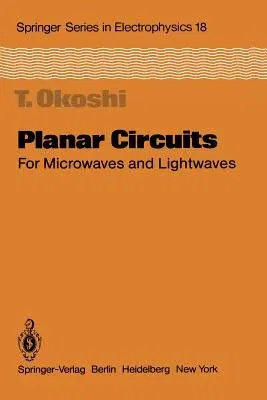T Okoshi
(Author)Planar Circuits for Microwaves and Lightwaves (Softcover Reprint of the Original 1st 1985)Paperback - Softcover Reprint of the Original 1st 1985, 17 November 2011

Qty
1
Turbo
Ships in 2 - 3 days
In Stock
Free Delivery
Cash on Delivery
15 Days
Free Returns
Secure Checkout
Part of Series
Springer Electronics and Photonics
Part of Series
Springer Series in Electronics and Photonics
Print Length
202 pages
Language
English
Publisher
Springer
Date Published
17 Nov 2011
ISBN-10
3642700853
ISBN-13
9783642700859
Description
Product Details
Author:
Book Edition:
Softcover Reprint of the Original 1st 1985
Book Format:
Paperback
Country of Origin:
NL
Date Published:
17 November 2011
Dimensions:
23.39 x
15.6 x
1.22 cm
ISBN-10:
3642700853
ISBN-13:
9783642700859
Language:
English
Location:
Berlin, Heidelberg
Pages:
202
Publisher:
Weight:
322.05 gm

